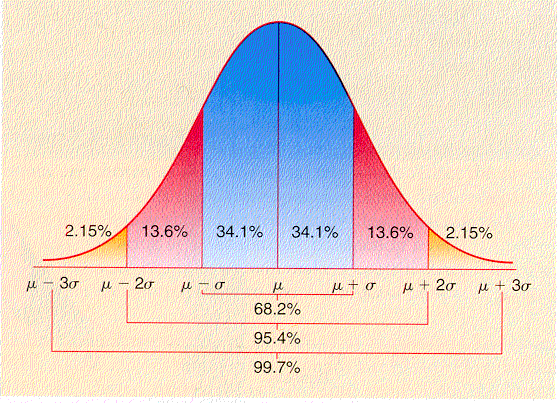So I decided to put down a quick reference to what a generalization refers to (partly so I can make quick reference to it later). Without getting too much into the math, here's a picture of what we call the "normal curve," which pretty much shows how people score or are organized in most areas of life, including intelligence, personality characteristics, chess ability, height, musical ability, or attractiveness.
 |
| From: http://www.comfsm.fm/~dleeling/statistics/notes06.html |
As you can see, it's color coded and broken into sections. These sections represent groups of people, depending on how far they deviate from the line in the middle (aka the average Joe).
The blue section is what we would call the "average." When we talk about IQ or SAT scores, the average range is that 68.2% in the blue shaded region. The average score (about 1000 for the SAT, or 100 for an IQ test) is the line right down the middle there. For example, in an IQ test the shaded area would cover scores ranging from 85 to 115, which is the range that most people (just about 68.2%) would score if you tested them.
The red and yellow zones mark people who are above or below the average range. For an IQ test, someone who scored above average in the range of 115 to 130 would fall under the red shaded area on the right (13.6% of people would have scores in that range, above others) and those who scored above 130 would fall into the yellow-ish shaded area on the right (with a tiny portion of the population, only 2.15%).
So, the way we think about "average" and the way we use generalizations, is people who basically fall in the blue shaded area. This is true for SAT scores and IQ tests, but also for things like attractiveness, basketball ability and pretty much any skill or attribute you can imagine.
Thus, a generalization very often and very likely refers only to the blue shaded area. Yes, there are plenty of people (close to 32%) who don't fit into it -either because they fall above or below the average range -and that is expected. The entire point is to capture a large portion of people -not every person -with a single statement.
No comments:
Post a Comment